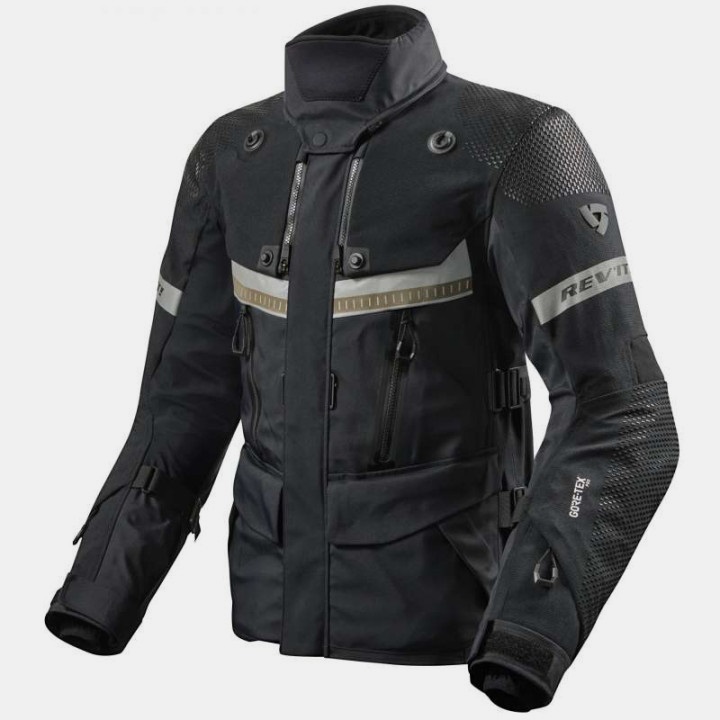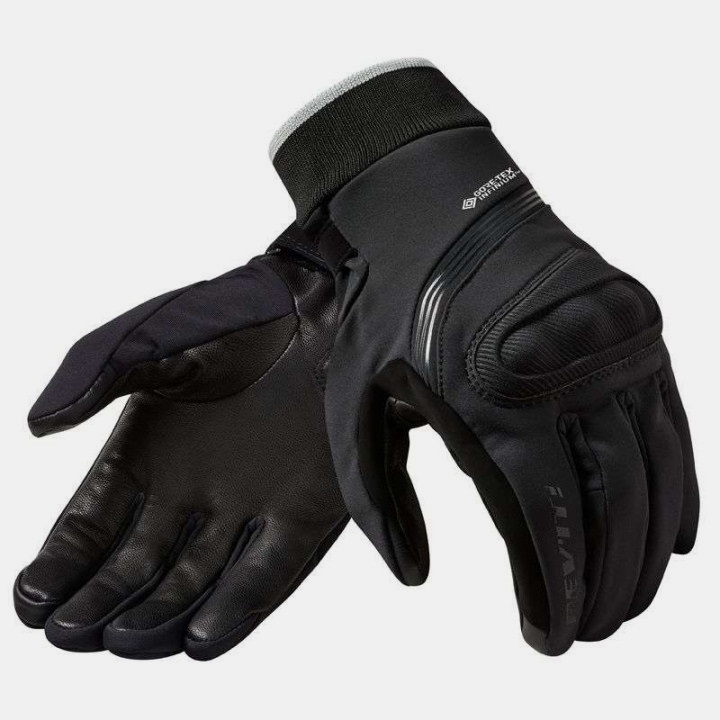
#goretex #equipment #technology
Gore-Tex has become the standard for waterproof motorcycle gear. And with good reason: this material achieves the miracle of being waterproof, windproof and breathable all at the same time. But what is Gore-Tex? Recycled unicorn hair? A material brought back from the future by Marty Mc Fly? In this article, we explain what this revolutionary membrane is all about. We tell you all about its design, limitations and alternatives!
What is Gore-Tex?
The basic principle behind this material is very simple: use a mesh that's just the right size. To put it simply, its holes are large enough to allow water vapor (perspiration) to circulate and fine enough to prevent drops (rain) from passing through. If you exaggerate, the Goretex membrane is like a sieve. Well, a molecularly meshed sieve, but a sieve nonetheless.
Is that all there is to it? Not quite, because knitting gloves with 9 billion holes per cm² is no easy task. So the material used to create this extra-tight mesh is a special one. It's Polytetrafluoroethylene. Doesn't that ring a bell? Well, you already use it regularly: it's called Teflon.
What is Gore-Tex made of? 2 or 3-layer laminate
At this stage of the presentation, Goretex is the surface of a pancake pan with a hole in it. Right. But this membrane is only 0.01mm thick. So it's not very resistant. To protect it, we sandwich it between two layers of stronger fabric. The term sandwich isn't exactly academic, as manufacturers tend to use the word laminate, which means (more or less) the same thing.
Laminated 2 or 3 layers, what does that mean? In 3 layers, the Gore-Tex membrane is "sealed" between the outer fabric and the inner lining. This sandwich is strong, but less flexible than the 2-layer version. In this second configuration, the inner lining is left free. It is, for example, the mesh inside your jacket.

Who defines the sandwich recipe? That's where it gets interesting! Well, in our opinion... Gore owns the patent for the Gore-Tex membrane only, but not for layering. As a result, every jacket, shoe or glove manufacturer wishing to incorporate this magical material into their products must have their lamination approved by the brand. Overzealous? Not at all. It's as if you were marketing wonderful Kobe steaks, but a restaurant was serving them as hamburgers between two slices of stale bread. The steak is good, but the sandwich isn't. CQFD. This way, when you see the Gore-Tex logo, you're sure of the quality you expect.
Integrated or floating Goretex membrane? That's the question
As you can see, each manufacturer uses Goretex in its own way. So, to make a motorcycle jacket waterproof, you have two solutions:
1. Laminate the Goretex directly with the outer material. In this case, the water-repellent fabric and the waterproof membrane are glued together. This method is particularly effective on top-of-the-range models. The ultimate example? The Klim jacket, with its laminated Goretex and zipped vents.
2, offer a removable waterproof lining using Gore technology. The advantage of this second approach? Modularity. A quick zipper and you're lightened by a liner when it's hot. Drawback? When it rains, you stay dry, but the outer fabric soaks up water. As a result, it can take a while to dry your jacket.
Are there different types of Goretex?
The answer is yes. As you can imagine, the requirements are not the same for jackets, gloves or shoes.
The crucial point for upper-body membranes? Breathability! That's why you'll find a Gore-Tex Windstopper Infinium version. Even more windproof and breathable, it can be found on the Klim Inversion under-jacket, for example.

----> Thermal underjacket Klim INVERSION Windstopper 2023
![]()
And for tougher uses? Goretex Pro is for you. With its high tear resistance, it's no surprise that this technology is used in the brilliant Rev'it Dominator 3 jacket.

----> Rev'it DOMINATOR 3 GORE-TEX® BLACK motorcycle jacket
![]()
And what about the hands? The challenge is to combine waterproofness and sensitivity. And yes, it's all about preserving the sense of touch! That's why Gore developed the Infinium Windstopper membrane specifically for gloves. Windproof, waterproof and warm, what more could you ask for from Rev'it Crater 2 wsp?

----> Rev'it CRATER 2 WSP motorcycle gloves
![]()
What about our feet? Not at all! The American company has developed a Gore-Tex Invisible Fit version that promises unrivalled comfort, as well as a Surround version for full breathability. A fine program, don't you think?
What are the limits of Gore-Tex?
If this membrane is so great, why aren't our valiant Breton sailors wearing it? Why the hell are they wearing yellow oilskins with zero breathability (and a dubious look)? The answer is simple: Gore-Tex isn't 100% waterproof. Let's just say it's waterproof up to a point.
As there's no such thing as a bucket of water in the face, we opt for the Schmerber. To put it simply, a tube is placed on the material, filled until the liquid flows through, and then measured. One mm on the water column corresponds to one Schmerber.
Gore-Tex guarantees 28,000 Schmerber. Running out of benchmarks? Here they are. Up to 10,000, the garment withstands a light drizzle, 15,000 for moderate rain and 20,000 for a family rinse. So 28,000 sounds fantastic! Except that, launched at 130km/h under a dantesque Breton drache, the water pressures exerted are insane. And after a few hours, the material will show its limits. Let's face it, this is an extreme case.
What are the alternatives to Goretex?
Every brand using Gore-Tex technology must pay a small fee to the Gore company. Do they all make this choice? Not necessarily. Here's an overview of the in-house technologies available for dry riding.
From boot brand Falco, you can find the Hightex membrane that equips the Falcos Avantour, for example. A worthy equivalent to Gore-Tex? Not really, as the test method for this technology involves walking 100 steps on a surface with water 5mm above the sole.
As for Dainese, they offer 3 different waterproof membranes: Gore-Tex, Absolute Shell Pro 20K and D-Dry. The latter two, developed in-house, offer 20,000 Schmerbers of waterproofing. Less effective than Gore-Tex, but still very respectable.
And what about Spidi? H2OUT technology ensures the waterproofing, breathability and ventilation of certain jackets, such as the Spidi 4 Season. This membrane offers 20,000 Schmerbers of waterproofing! Equivalent to Dainese, but still less than Gore-Tex.
As for Rev'it, they have developed the Hydratex de chez Rev'it and Alpinestars the Drystar membrane. However, there are no official figures on how waterproof they are. The only way to find out is to experiment in the field.
Who's the winner of this waterproofing contest? Ixon with its Xdry membrane! Yep, 26,000 Schmerbers! A great score! You'll find it on the Ixon 3 in 1 Ragnar.
And now you know all about Gore-Tex. Is it a great material? Clearly. Is it the only technology available? No. You now have all the knowledge you need to choose your next waterproof outfit. And you no longer have any reason to avoid riding in the rain. Happy riding!
Our last posts
#interviewmotarde #etonvaoumaintenant #motardevoyageuse #voyagemoto
#hivernale #millevaches #équipementmotard #aventuresmichel
#aventuresmichel #hardefitour #raidenduro #tout-terrain
Aucun produit
